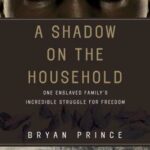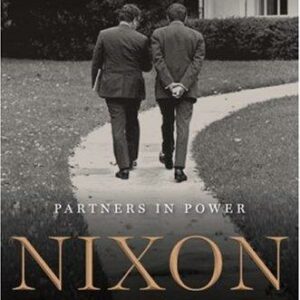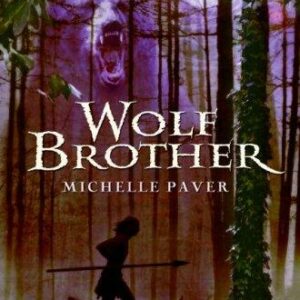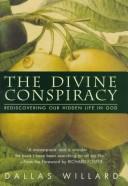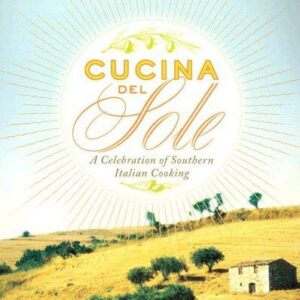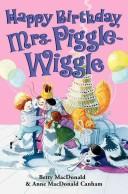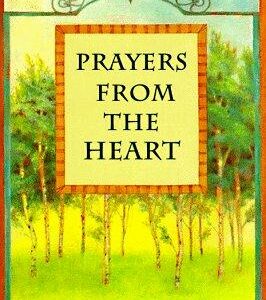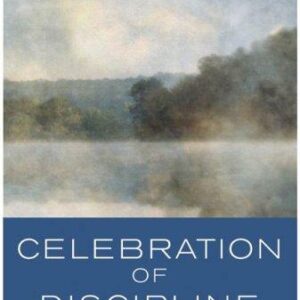A Shadow on the Household
$29.95
| Title | Range | Discount |
|---|---|---|
| Trade Discount | 5 + | 25% |
- Description
- Additional information
Description
“A work with the breadth and depth of a historical epic. . . . At times, it’s easy to forget that A Shadow on the Household is a work of history, and not fiction. Often, the text has the heightened drama of a detective narrative, with villains and heroes, and people working against the clock, against unimaginable odds. . . . a gripping and comprehensive historical investigation that will draw you in and make you think.”
– Montreal Gazette
“Prince’s concrete details of a desperate time and place bring the family fiercely to life. It is a superb piece of scholarship.”
– Globe and Mail
“[A] compelling work of popular history . . . Extensive details and background make for chilling and gut-rending reading. . . . Accounts such as this people’s history remind us of our inhumanity, but also of the good that devotion and commitment can achieve.”
– Winnipeg Free Press“Prince, a Buxton-area farmer and a descendant of slaves, clearly possesses a remarkable understanding of the history of the subject he has written about. A Shadow on the Household is an unrelenting triumph; a glowing, exhaustively researched and utterly sincere work that demonstrates how tight family ties can be. Outstanding.”
– SCENE magazine
“What a fascinating story! With prodigious research, a fine eye for detail, and a deep respect for a family who endured the most painful trauma under the slave system that governed their lives, Bryan Prince brings the dramatic tale of Arabella and John Weems and their nine children to life. Prince is an accomplished storyteller.”
– Karolyn Smardz Frost, Governor General’s Award-winning author of I’ve Got a Home in Glory Land
“The powerful drama of the Weems family’s pursuit of freedom is beautifully and hauntingly retold here through Bryan Prince’s remarkable storytelling skill. A Shadow on the Household is an extraordinary tale of the powerful bonds of family that even slavery and forced separation could not destroy. . . . A Shadow on the Household is a story of heroes and villains, of joy and pain, and ultimately a salute to real freedom fighters. A must read.”
– Kate Clifford Larson, Ph.D., author of Bound For the Promised Land: Harriet Tubman, Portrait of an American Hero
“A Shadow on the Household contrasts slavery’s insidious and cruel assault on the black family with the Weems family’s unflagging, courageous, heartbreaking and exhilarating struggle to free each and every member of the family. A Shadow on the Household is a must read for the steadily growing number of people who know history is far more exciting and complex than the watered-down version we’ve long been offered.”
– Mary Kay Ricks, author of Escape on the Pearl: the Heroic Bid for Freedom on the Underground RailroadBryan Prince is an award-winning author and a descendant of slaves who came to Canada prior to the American Civil War. Among his many projects, he is a director and historian with the Buxton National Historic Site and Museum, a partner of York University’s Harriet Tubman Institute, and a consulting editor with the Adam Matthew Publications digital project Slavery, Abolition, and Social Justice in England. He is the author of I Came As a Stranger: The Underground Railroad, which won the 2005 Children’s Nautilus Book Award for Non-Fiction. He lives in Buxton, Ontario.
The Weems family felt the first troubling rumbles of a distant thunder in 1847, when their by now long-widowed master, Adam Robb, died. Up until then Arabella, her children, her mother, sister, and other family members had been held together and hired out or had laboured on Robb’s farms, which had such exotic and curious names as “Oatry’s,” “The Resurvey on St. Mary’s,” “Coup de Main,” “Wickham’s Chance,” “Spittlefields,” “Smoch Ally,” “The Resurvey of the Wheel of Fortune,” and “The Resurvey on Valentines Garden Enlarged.” Now, the very real possibility existed that they might be forcibly removed from the fields and meadows to which they had become attached.
On May 15 of that year, Adam Robb’s estate was listed and evaluated. Despite his advanced age, Robb had avoided facing the inevitable and had died without having prepared a last will and testament. It therefore fell to his then widowed daughter, Jane Beall, and to his son-in-law, Henry Harding, to put a price on all of his belongings. At that time, Robb’s daughters, Jane and Catharine, were the only two legal heirs acknowledged; John had died several years before, and curiously Alexander was not named. Robb’s assets included a herd of cattle, a flock of ewes and lambs, numerous pigs and horses, a team of oxen, and a large quantity of farm and blacksmith equipment that had been needed on Robb’s huge plantations. Household goods were included — a weaving loom worth five dollars, an old butter churn worth a quarter of a dollar, a bowl and pitcher worth twelve cents, and even a “lot of broken spoons” inexplicably rated at $1.50. Two old muskets worth fifty cents and three leg chains valued at $1.25 each conjure up more ominous images.
Then appeared the long list of “negroes,” male and female, adult and child. Fifty-year-old Mary Jones was worth $75. Fifty-five-year-old John Henson was evaluated at $150. Arabella’s sister, twenty-seven-year-old Annie Maria (hereafter called Annie), $450. Their aging mother, Cecilia, at $15, was worth exactly the same value as a roan cow and only three dollars more than six silver tablespoons. Arabella’s children were also listed: Mary Jane, 16, $500; Catharine, 13, $400; William (Augustus) 12, $375; Adam, 7, $175; Ann Maria, 5, $125; eighteen-month-old Joe was listed along with his thirty-five-year-old mother, Airy, at $325. The age of Richard, who was considered “infirm” and therefore worthless, was not deemed significant enough to list. By comparison, a grey horse named Charley was worth $50, a water bucket 16 1/4 cents, and the Muscovy ducks in the barnyard 37 cents each.
In the following winter, on February 10, 1848, the estate sale was held and the financial ledgers balanced. A few deductions were made to the earlier property evaluation, such as $57.27 for Adam Robb’s funeral as well as $7.50 for taxes paid for his “negroes in George Town.” Another $450 was removed because of the untimely death of the slave Ninian while still in his mid-thirties. His passing denied him the opportunity to be united with his wife, Sarah Ann, and his two daughters, who were already the property of Henry Harding. Although neighbours bought many of the items, most were bought by Adam Robb’s daughter, Jane Beall, and by his grandson, Charles Adam Harding. Thankfully none of the slaves were sold at that day’s auction.
In fact, rather than being sold, some of them actually purchased items from their late master’s estate with pennies saved over the years. Hester Diggs bought a flax wheel and Mary Jones bought several items, including a tea canister, two ovens, bottles, a pitcher, and a set of brass candlesticks. Among Arabella Weems’s purchases were a coffee mill, an iron pot, a walnut table, and chairs. Her bill came to $1.91. The recorder of the transactions was careful to note all of the purchases the slaves made on a separate page. As they gathered these reminders of their former lives, the slaves nervously tried to comfort themselves that perhaps life would not change too much.
Adam Robb’s daughter Jane died on August 2, 1848, at age fifty-six, and her death before Robb’s estate could be settled between her and her sister, Catharine, made the entire process more complicated and more painful. Jane’s share would go to her daughters — Jane, Matilda and Margaret, all destined to be lifelong spinsters. The legal disposition of the estate was initiated on December 11, 1849, at the Orphans’ Court of Montgomery County, and although the slaves had been appraised in 1847, Catharine’s husband, Henry Harding, made a request to reassess Them. Ironically, Henry was by this time registrar of the county court and recorded the proceedings. William Viers Bouic, a lawyer, and Michael H. Letton, a Rockville butcher, were called upon to give their learned opinion on the value of the human flesh.
A gentle snow fell during the week that Bouic and Letton went about their work. The Baltimore Sun painted a romantic picture of Rockville covered in white. “The sleigh bells are sounding and the beaus, wrapped in their furs, are enjoying themselves to their heart’s content. When the sleighing time passes the priest and the parson will be called upon to finish the frolic.” Adam Robb’s slaves, who were being examined like livestock, did not share in the frivolity.
Two weeks later, on Christmas Eve, Bouic and Letton’s official status as appraisers was reconfirmed by George R. Braddock, Montgomery County’s justice of the peace. They made an “oath on the Holy Evangely of Almighty God that they will well and truly appraise the negroes belong to the estate of Adam Robb late of the said county deceased and to the best of their skill & Judgement perform the duty imposed upon them.” They had accomplished their ghoulish task, not only appraising the slaves but also dividing them. Thirteen went to Jane’s estate, including an aging John Henson, Josiah’s brother, as well as Arabella’s elderly mother, Cecilia, often called Cicely, then estimated to be in her seventies and valued at ten dollars. Along with them went Arabella’s sister, Annie, and Annie’s two infant daughters, who were valued as a unit at $525. The remaining fifteen slaves went to Catharine Harding, including:
• Mary Jones (the godmother of some of the Weems children), fifty, $80
• Hester Diggs, fifty-five, $20
• Gus (Augustus) Weems, fourteen, $425
• Catharine Weems, fifteen, $550
• Ann Maria Weems, six, $200
• Adam Weems, nine, $250
• (Mary) Jane Weems, sixteen, $550
• Airy (Arabella) Weems and her youngest children Joseph, four, and John, two, $500
• Dick Weems, eleven and “infirm,” was valued at only $25.
To ensure that the division was equitable, Jane Beall’s orphaned daughters were ordered to pay $32.50 to their aunt, Catharine Harding.
Attributing worth to humans was always an inexact science. Much depended upon sex, age, and physical attributes. At thirteen, Catharine Weems had been evaluated at four hundred dollars. Two years later, as her body developed and her beauty blossomed, another $150 was added to her value. Six-year-old Ann Maria and her fourteen-year-old brother Augustus had increased by $75 each. Nine-year-old Dick’s physical disabilities had rendered him worthless in 1847, and in 1849 his value had increased only slightly to a still insignificant amount. Thirty-seven-year-old Arabella, who always seemed to have an infant at her breast and another in her womb, had declined in value in contrast to that of her younger sister, Annie, and even to her eldest daughters. At this time, Arabella was five months pregnant, expecting her ninth child, another son, whom she would name Sylvester when he was born the following April. But by enriching her own life with the joy of motherhood, she inadvertently enriched her owner’s net worth.
The extraordinary story of one couple’s determination to free themselves and their children from slavery and make a new life in Canada
Prior to abolition in 1865, as many as 40,000 men, women, and children made the perilous trip north from enslavement in the United States to freedom in Canada. Many were aided by networks that came to be known as the Underground Railroad. And the stories that emerge from the past about these journeys are truly remarkable.
In A Shadow on the Household, Bryan Prince, a descendant of slaves, brings to life the heart-wrenching story of the Weems family and their struggle to liberate themselves from slavery. John Weems, a man who purchased his own freedom, paid the owner of his enslaved wife and eight children an annual fee to keep them together at one plantation. But when that owner died, the Weemses were cruelly separated and scattered throughout the South. Heartbroken and desperate, John resolved to raise the money to buy his family’s freedom and reunite them. Mining newspapers, private letters, diaries, estate records, marriage registries, and abolitionist papers for details of a story cloaked in secrecy, Bryan Prince has rescued the Weems family and their plight from historical oblivion.
An unforgettable story of love and persistence, played out in four countries (the United States, Canada, Jamaica, and the United Kingdom) against the backdrop of the publication of Uncle Tom’s Cabin, a growing abolitionist movement, and the heroic efforts of the Underground Railroad, the Weems family saga must be read to be believed.
CA
Additional information
| Weight | 1 oz |
|---|---|
| Dimensions | 1 × 6 × 9 in |


